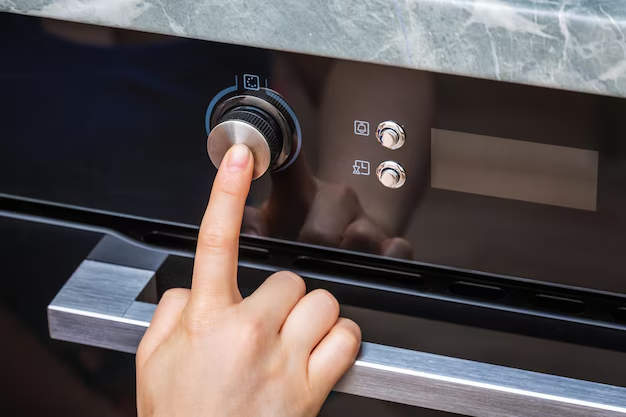Setting the Temperature on Your Frigidaire Refrigerator: A Comprehensive Guide
Your refrigerator is the heart of your kitchen, keeping your food fresh and your drinks cold. If you own a Frigidaire refrigerator, you might wonder how to set the temperature correctly to ensure optimal performance. This guide will walk you through everything you need to know about setting and managing the temperature on your Frigidaire refrigerator.
🌟 Why Proper Temperature Setting is Crucial
Correct temperature settings play a significant role in food preservation and energy efficiency. A well-maintained temperature means your food stays fresh longer, saving you money and reducing waste. Additionally, incorrect settings could lead to higher energy bills or potential appliance issues.
Key Considerations
- Food Safety: Keeping perishable items at the right temperature prevents the growth of bacteria.
- Energy Efficiency: Proper settings help reduce electricity usage.
- Appliance Longevity: Maintaining ideal temperatures can prolong the life of your fridge.
🏠 Understanding Your Frigidaire Refrigerator’s Controls
Frigidaire refrigerators come with different types of controls, depending on the model. Here’s a breakdown of the most common control types you might encounter:
⚙️ Digital Controls
Digital controls offer precise temperature settings and are typically easy to use. This type usually has a display showing the current temperature and allows you to adjust with just a touch.
🔄 Dial or Slider Controls
These are manual controls often found in older or entry-level models. They might require a bit more guesswork but are generally straightforward once you're familiar.
🌡️ How to Set the Temperature
1. Locate the Controls
- Digital Models: Look for a panel inside the refrigerator or on the exterior door.
- Manual Models: Often found at the top or back of the fridge compartment.
2. Adjust the Temperature
- Recommended Settings:
- Fridge: Set at approximately 37°F (3°C).
- Freezer: Set around 0°F (-18°C).
- Digital Controls: Use the up/down buttons to adjust to the desired settings.
- Manual Controls: Adjust the dial, usually marked from "Cool" to "Colder."
3. Allow Time for Adjustment
- Wait at least 24 hours after changing the settings before making further adjustments. This gives the fridge time to stabilize at the new temperature.
4. Verify with a Thermometer
- Place a thermometer in a glass of water inside the fridge and check after 12 hours to ensure accuracy.
📊 Common Temperature Issues and Fixes
🚨 Too Cold or Too Warm?
If you notice inconsistent temperatures, here are potential causes and solutions:
- Blocked Vents: Make sure there's nothing obstructing the airflow inside the refrigerator.
- Improper Seal: Check the door seal for leaks. A tight seal ensures efficiency.
- Overfilled Compartments: Avoid overpacking, which restricts airflow and affects cooling.
🤔 Troubleshooting Tips
- Power Outage: A sudden power loss can alter settings; check and reset if needed.
- Regular Maintenance: Clean coils and check for any signs of wear or damage periodically.
🔧 Maximizing Your Refrigerator’s Performance
A few best practices can help you maintain the ideal environment inside your fridge:
🛠️ Regular Maintenance
- Clean condenser coils every six months.
- Check door seals regularly to ensure they aren't cracked or degraded.
🧊 Defrosting Needs
Some models require manual defrosting. Make it a routine to defrost when you notice excessive ice buildup in the freezer.
🥶 Optimizing Storage
- Top Shelves: Ideal for items that are less perishable.
- Lower Shelves: Use for raw ingredients to be cooked soon.
- Doors: Store condiments, not milk or eggs, as doors experience the most temperature variation.
🌟 Quick Reference Summary
Here's a handy summary to keep your refrigerator running smoothly:
- Set Fridge: 37°F (3°C) 🌡️
- Set Freezer: 0°F (-18°C) ❄️
- Check Seals: Ensure doors close tightly 🚪
- Avoid Overfilling: Space for air circulation 📦
- Use a Thermometer: Verify internal temperatures 🎛️
- Allow 24 Hours: For temperature adjustments to stabilize ⏳
Feel free to print this section and keep it handy for quick guidance!
🏆 The Importance of Regular Monitoring
Monitoring your refrigerator’s performance is key to its long-term efficiency and your peace of mind. By regularly checking temperature and ensuring proper maintenance, you can rest assured your food remains safe and fresh.
Temperature setting in a Frigidaire refrigerator is a task that, when done correctly, keeps your kitchen smoothly running. With this detailed guide, you can confidently manage your refrigerator’s settings and ensure a well-functioning appliance for years to come.
Remember, keeping a balanced temperature is not just about preserving your food but optimizing your energy usage and extending the life of your refrigerator. Whether you use digital or manual controls, a little attention and care go a long way. 😊
